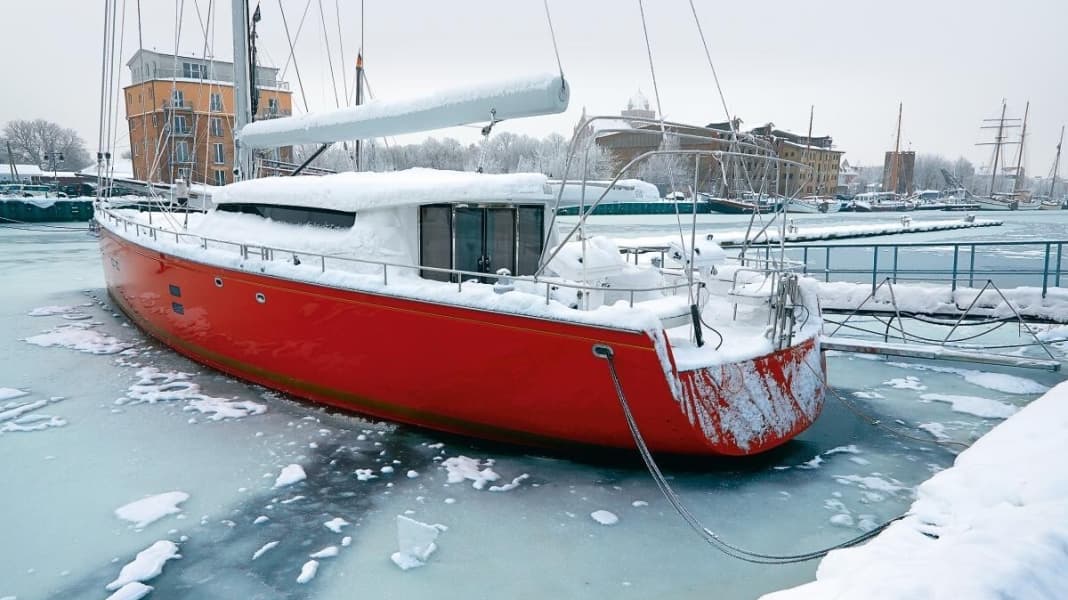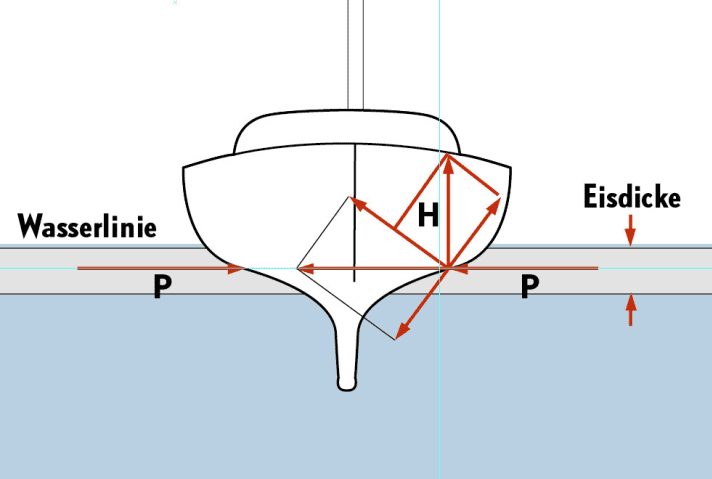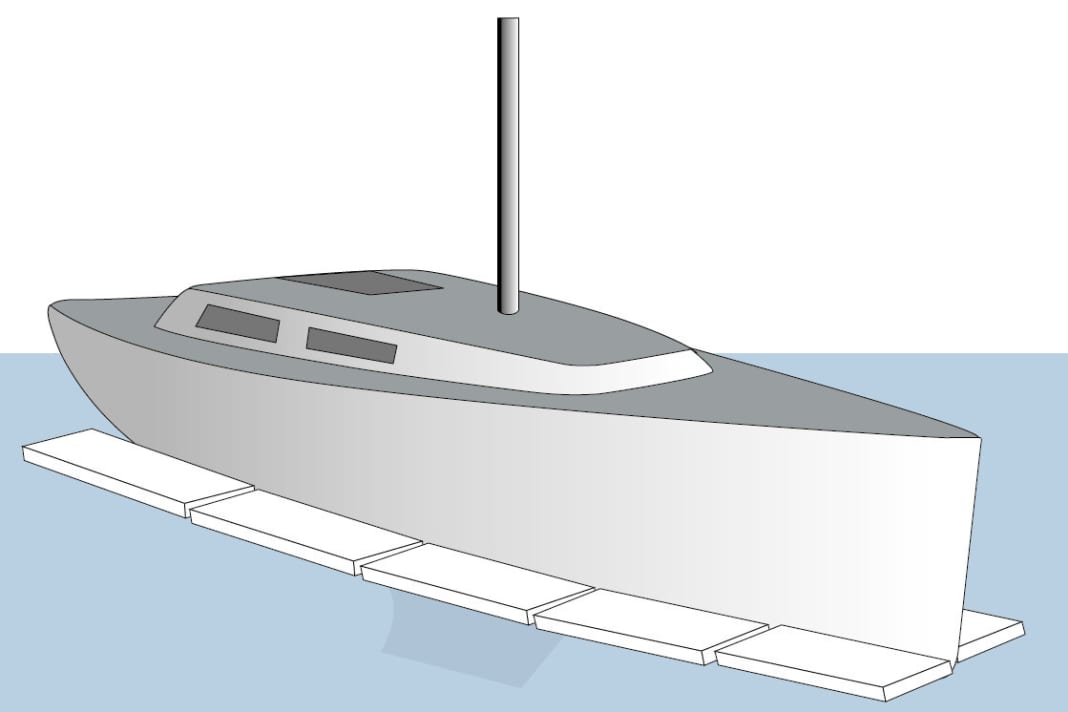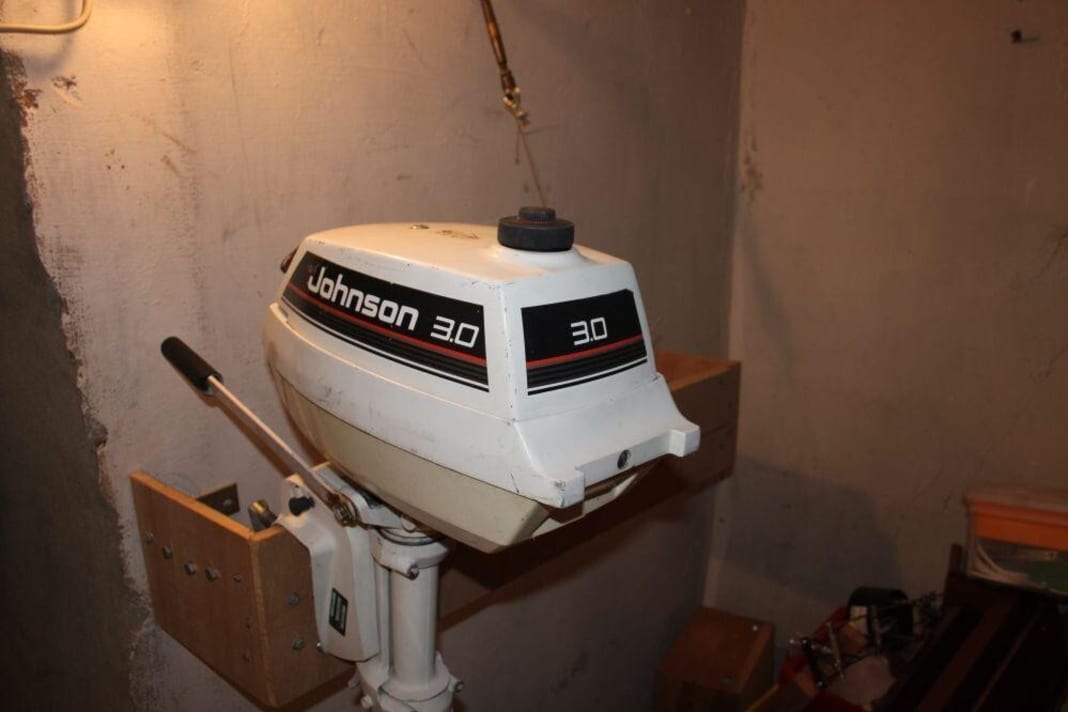Winterising special: Winter storage - What owners should consider now

Every autumn, the marinas are a hive of activity when it comes to transporting the fleet ashore for winter storage. Usually only a few yachts remain in the water.

For some skippers, however, winterising in the water is the result of a well-considered decision: Why bring the boat out onto dry land, pay for the expensive uncraning, the bearing block and MIete, when the antifouling can also be painted in the spring in the Travellift? In fact, the autumn crane date is probably more of a national tradition. In Holland, around 70 per cent of boats spend the winter in the water, which is quite normal there. So why not give it a try?
But be careful: not every harbour is suitable for wintering. The berth should be in calm waters so that any ice that may form does not get caught in the drift - or alternatively in an area with a steady current that keeps the boat free of ice. Mooring in tidal areas or areas with changing water levels harbours the risk of the solid ice cover breaking into floes, which then overlap and exert a pressure effect on the boat.
How to keep the ice at a distance




Many methods have been devised recently to keep ice at bay and avoid the dreaded "crushing" by ice floes. From simple household remedies to elaborate compressed air and hose constructions, freezing can be prevented. Three variants in the photo gallery.
The oldest method is probably to tie polystyrene sheets around the hull, as water does not freeze under the sheets. A more innovative method is a de-icer from the American company Kasco Marine ( www.de-icer.com ). The device resembles a buoy with a propeller, which can either be mounted under a jetty using a pole or under a boat using lines. The three models with outputs between 0.5 and 1 hp cost between 950 and 1700 euros. The De-Icer works with shore power and scoops the warmer water at the bottom of the water to the surface. Alternatively, you can build a similar system yourself with little effort using a submersible pump and a few hoses (see also YACHT 24/2017).
The third method is bubble systems. Depending on the size of the boat, you will need a pond air pump or a compressor and a garden hose. Press a hole into the hose every 50 centimetres using a hole punch and secure it with lines around the boat at a depth of half a metre. The air bubbles that rise to the surface through the holes prevent ice from forming.
Outdoor parking spaces: The better alternative?
Outdoor storage space is much easier to obtain than indoor space. What's more, it only costs around half as much as a comparable space under the roof. However, there are some disadvantages to accept.

Exposed to wind and weather
Although protection from the weather is not absolutely necessary for plastic yachts, it is recommended to preserve their value and prevent them from getting dirty. The best option is a proper tent with a solid PVC tarpaulin, as it takes the wind pressure off the hull. However, this can quickly cost a four-figure sum. A tarpaulin directly over the boat is also sufficient, but it offers an enormous area exposed to the wind. If a storm threatens, it has to be removed. In general, a tarpaulin should preferably be stretched over a solid frame erected on deck.
Compared to indoor storage, outdoor storage also requires more frequent checks - for example, to ensure that the tarpaulin is still in place and that the ship has not been attacked by thieves. Open-air storage is easier for thieves to access than lockable warehouses, but the ship should not be too heavily barricaded for ventilation purposes.
Working groups do not form as quickly in open-air storage as they do indoors.
Mast laying
The wind load is one of the main reasons against winterising with the mast upright. Constantly working against the leeward supports of the bearing block can lead to delamination of the bearing surfaces or breakage. In addition, a standing rig cannot be checked as thoroughly for damage. Therefore, if it breaks, the fee saved for the mast crane and the time saved are quickly cancelled out. In addition, a suitable tarpaulin is more complex to produce and more expensive when the rig is upright. And last but not least, the service life of the wires is shortened. They stretch under load even in winter and have to be re-tensioned in spring, i.e. twice as often as usual, which almost halves the recommended 15 years.
Thought of everything? What you should definitely not forget before winter
- Check insurance to see if there are any exclusions for wintering in water
- Check whether the guarantee for freedom from osmosis stipulates that the vessel must be out of the water for a few months a year
- Check whether the harbour is ice-free in winter and whether there is a current
- Is a crane available? It is the only chance in the event of an emergency escape
- After the last trip: lower the sails
- Ensure that the batteries are always fully charged






- Cover the entire deck with a tarpaulin if possible. Tie it down flat and smooth so that no water pockets form and wind resistance is minimised. Ventilation openings should be provided in the tarpaulin
- Make the cockpit bilge pump ice-proof: Close the water hose at the top and bottom and then lead it through the bilge pipes to the outside
- Winterising the machine
- Fill diesel tanks to the brim, otherwise there is a risk of condensation and algae formation
- Fill ball valves, hoses and the on-board toilet with antifreeze
- Collaboration: Johannes Erdmann, Lars Bolle

